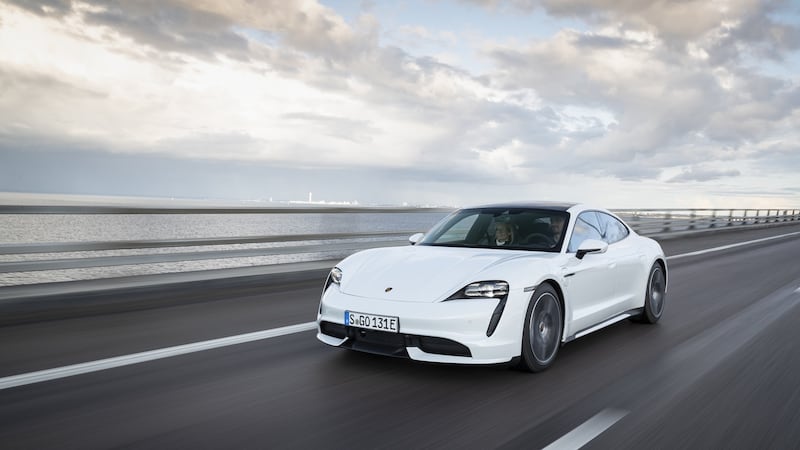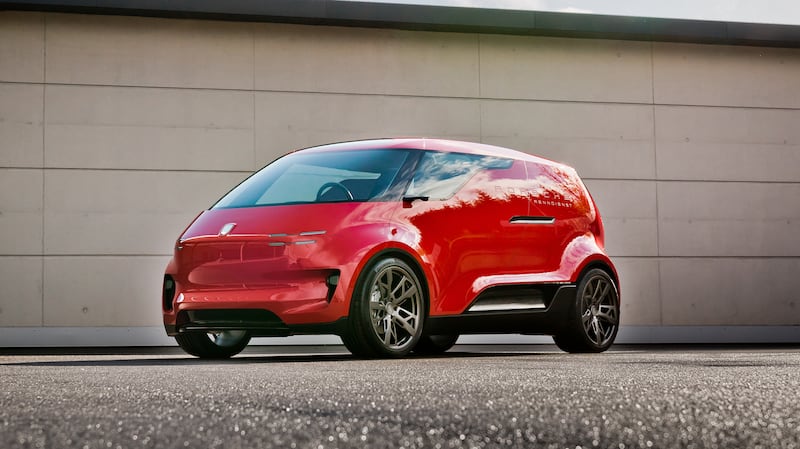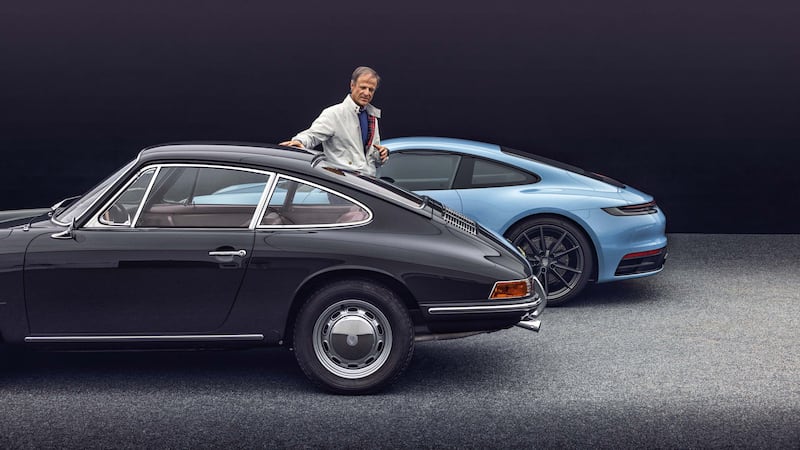Michael Mauer is hiding a deep, dark secret. “My first car?” He repeats my question, his eyes shining with a mixture of nostalgia and the fear of being somewhat outed. “Actually, I had a green Nissan 160″ says the man who’s responsible not only for making modern Porsches look good, but is also the head of design for the broader VW Group. “There were really not that many cars on the road in Germany back then, and the Nissan had two advantages. First, it was really cheap. And second, it had 85hp, at a time when all of my friends had Beetles and early Polos with maybe 45hp.”
It’s tempting to think that Mauer has spent the years since trying to recompense the world for such a plain-looking car, but he merely chuckles at the suggestion. Its certain that, in his professional life as one of the leading car designers in Europe, he hasn’t had much contact since with cars of that kind of cheapness. Mauer made his name at Mercedes-Benz, he’s been heading up Porsche’s design department for almost 20 years (next year will be his 20th anniversary there) and has latterly become the overarching head of Volkswagen Group Design.
Given Porsche’s enormous influence on the car market in general — it’s generally held as an exemplar of both tastefully understated styling and blistering performance — Mauer has had more influence of late than many, heading up the teams that designed the Panamera, the Macan, the 918 Spyder, and Porsche’s first all-electric car, the Taycan.

“When originally we designed the Mission E, the concept car that came before the Taycan, that was before EV was ever on the table,” Mauer tells The Irish Times. “We just said: ‘yes, we are Porsche; we could do a super-sports concept, a hypercar concept with four seats.’ Of course, we have the expertise with having the engine in the back, so the idea was born but then with battery technology, it was even easier to stick to this proportion, to this concept and bring it into the real world.”
READ MORE
It’s those very proportions, the whole idea of what a car’s shape can be, which are up for grabs as we move into the electric world. Mauer himself has recently pushed the boundaries of what one might expect with a Porsche concept called the Renndienst.

Instead of a low-slung sports car, or even a muscular SUV, it’s actually a tall, roomy van, an MPV shape with Porsche details and performance. Rumour had it (still has it, occasionally) that the Renndienst — named after the Volkswagen Type 2 support vans that used to lug spare parts for Porsche’s racing teams in the seventies — might be closer to production reality than we had thought.
Mauer doesn’t quite confirm that, but he doesn’t rubbish the idea either. “The Renndienst? I wish …” he tells The Irish Times. “But it’s a great example of how EV technology can allow you to change the proportions. If you take the performance expectations of such a car in the combustion world, it would have meant having a pretty big engine either in the front or the back. With that, this silhouette would not have been possible. To do such a car, EV technology is a prerequisite. I still wish the decision was taken to do this car, but so far no decision is taken. But we always include the model in our presentations, and as I said, with the new technology, anything is possible.”
A Porsche MPV with electric power, and the driver in a central seating position? If that’s the future, then sign us up. However, before the future arrives, there is a present to deal with, and that — along with all the technical challenges of switching from combustion to electric power — includes taking on a veritable horde of Chinese competitors, packing impressive technology and sharp pricing. How can the VW Group leverage its heritage to compete?
“Design will make the difference in the future” says Mauer. “If you look at the expertise in combustion engines, yes whether you’re Porsche or Bugatti, you can have this little section of the car and it’s producing maybe 700hp or even 1,000hp, and you can’t just decide over a weekend to replicate that expertise. But then there are other examples where you don’t need that expertise anymore, especially when you have more and more legal restrictions, more and more traffic, and when autonomous driving is becoming an interest for so many.
“So what makes the difference in the end? It is the look, and it is the experience, I might say the brand experience and design and designers can play a very important role in this. If you look at the German car industry in the past, technology was so important for customers. So the good thing is that over these years, we were able to build up a very positive brand perception, based on these older values. This is a good starting point, and if you have a start-up brand, you are starting at zero. In some ways that can be an advantage, but you have to build up this credibility, and therefore designers become even more important in the future.”
Of course, there is an inherent danger in leaning too hard on one’s heritage. Do that too much, and design is in danger of stagnating. Flee too far from it, and you risk alienating the customers who’ve stuck with you. Mauer compares this to throwing a stone in front of you: “You throw the stone in front, so it’s going into the future” he says. “But you can’t throw it too far — potential customers have to be able to find the stone. There are so many examples of car designs that were extremely progressive and innovative, but they were so obviously far ahead of their time that they were not accepted.”

One thing, one car, will remain sacrosanct, though. The Porsche 911. “This is a car that we, as designers and as Porsche designers, should not mess with. Whether you are a Porsche customer, or you have been one, or you are going to be one, you want a 911. And we have this discussion, if we no longer have a combustion engine, then is a 911 still a 911? But as a designer, I’m saying with the new technology we could come even closer to the original shape of the 911.”














